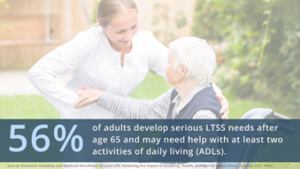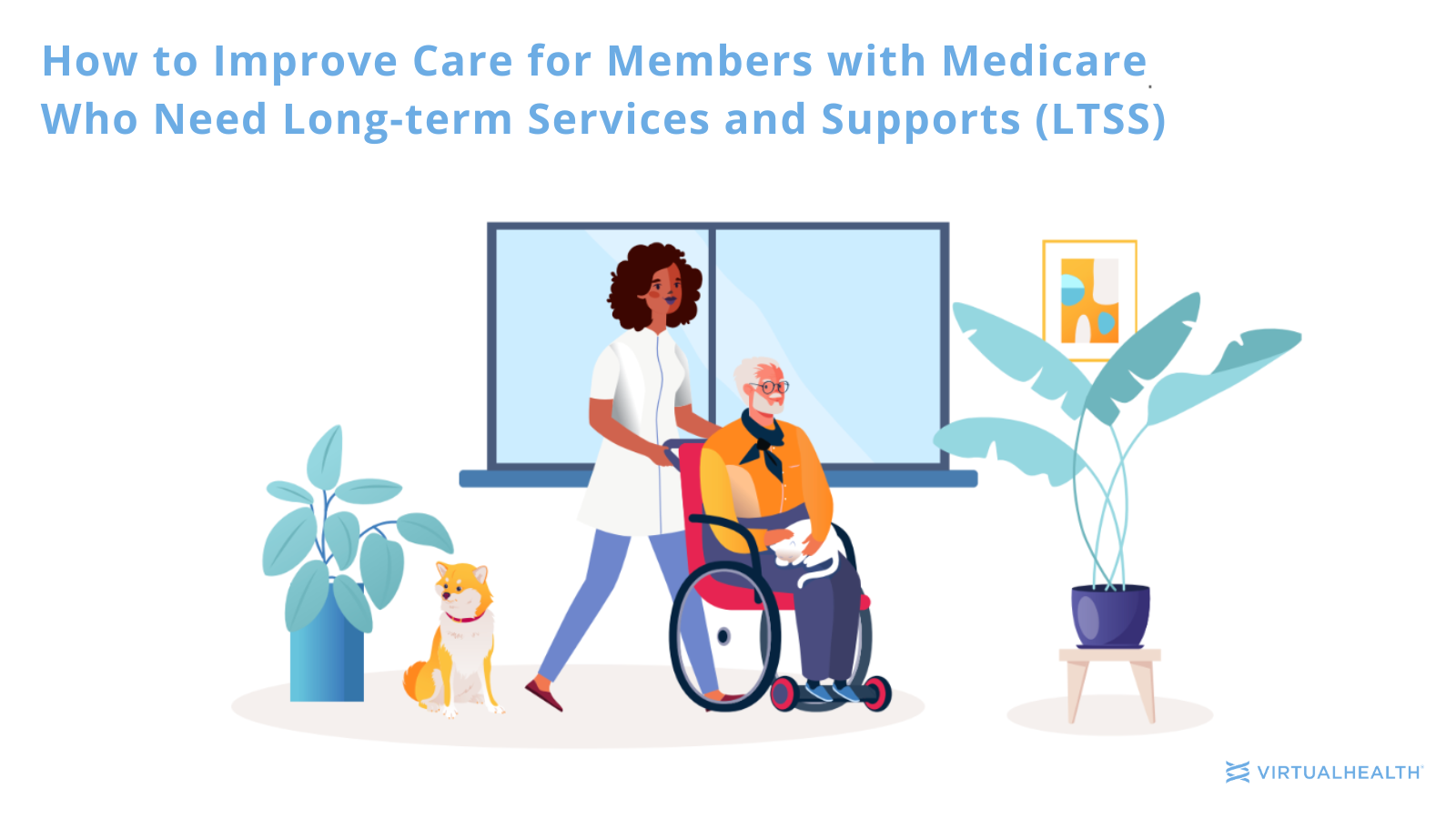This is the first article in a six-part series exploring ways to improve the delivery of whole-person, value-based care to Medicare and Medicare Advantage populations. Here, we dive into our first area of focus: ensuring optimal care for members who need long-term services and supports (LTSS), for which Medicare does not provide comprehensive coverage.
You can also download our white paper Effectively Managing Medicare Populations: 6 Focus Care Areas to get more information and insights.
A significant percentage of members with Medicare over age 65 will likely need some level of LTSS care at some point. This may include activities of daily living (ADL) and/or instrumental activities of daily living (IADL) ADLs include basic activities such as eating, bathing, walking, dressing and undressing, toileting, and transfers (e.g., moving from a chair to a wheelchair or walker, or in and out of the bathtub or shower, or from a bed to a bedside commode). IADLs include more complex activities like managing finances, cooking and meal preparation, using transportation, and medication management.
One report found that 57% of adults develop serious LTSS needs after age 65. An estimated 56% will receive some paid LTSS care including needing help with at least two more activities of daily living (ADLs).

Medicaid typically covers LTSS, while Medicare limits related coverage to specific qualifications. Medicare benefits related to LTSS are typically limited to post-acute care needs rather than ongoing LTSS assistance. Additionally, the Indian Health Care Improvement Act reauthorization allowed tribes to include LTSS in their self-governance agreements with the Indian Health Service.
Supporting Medicare Members Who Require LTSS
Members may or may not have the coverage they need for LTSS.
In fact, more than 4 in 10 community-living older adults experienced adverse consequences due to unmet LTSS needs, according to a 2021 analysis by Commonwealth Fund.
For Medicare and Medicare Advantage payers and providers, unmet LTSS needs can result in higher costs, poorer health, and suboptimal outcomes for members who need but don’t receive those services.
Meeting members’ LTSS needs plays a key role in enabling self-management of health and increasing the overall quality of life. Care managers can help advocate for members requiring LTSS by monitoring emerging needs, closing gaps in care, providing education, and linking with community resources and services to help these members improve their quality of life and health outcomes.
It’s also important to keep in mind that LTSS needs are influenced by social determinants of health (SDOH) – nonmedical factors that affect clinical health, like economic and housing stability, food security, health literacy, and education. Addressing SDOH combined with timely access to LTSS is critical to promoting better outcomes and lowering costs, according to a May 2022 report from the government advisory group MACPAC.
How HELIOS Helps Care Managers with LTSS Users
A medical management platform like HELIOS makes it much easier for care managers to prioritize LTSS for members who need it most. In general, this technology helps by streamlining tasks, automating workflows, and aligning all care team members around one centralized member view.
Here’s a more detailed look at how HELIOS can specifically help care managers optimize their efforts to support members who need LTSS services.
- Simplify care coordination for individuals in need of LTSS. Members requiring LTSS are often some of the most complex individuals to manage, with multiple comorbidities, medications, treatments, and specialists involved in their care. HELIOS centralizes all relevant member information – including details on behavioral, physical, and SDOH factors – to allow care team members to make informed decisions that support a whole-person approach.
- Quickly address emerging LTSS needs. Automated workflows that use data on an individual’s changing condition (e.g., deteriorating ability to perform ADLs/IADLs) recommend the most appropriate screenings, assessments, and interventions at the right time.
- Connect members with community resources that support SDOH. As mentioned, SDOH factors are closely linked with LTSS needs. For example, a person who needs assistance with dressing, bathing, and cooking may also be unable to drive or may benefit from access to a food pantry or meals-on-wheels. With easy one-click access to various community resources and services that address SDOH, care managers can help members solve challenges related to LTSS needs.
- Empower members to better manage their health. With HELIOS’ deep well of health education materials and resources, care managers can educate members on self-care for better management of chronic conditions and other factors that impact the ability to complete ADLs and IADLs.
Learn More About How to Improve Medicare Population Health Management
Check out the other five posts in this series to see how to improve medication adherence and outcomes for members who need additional support and services.



